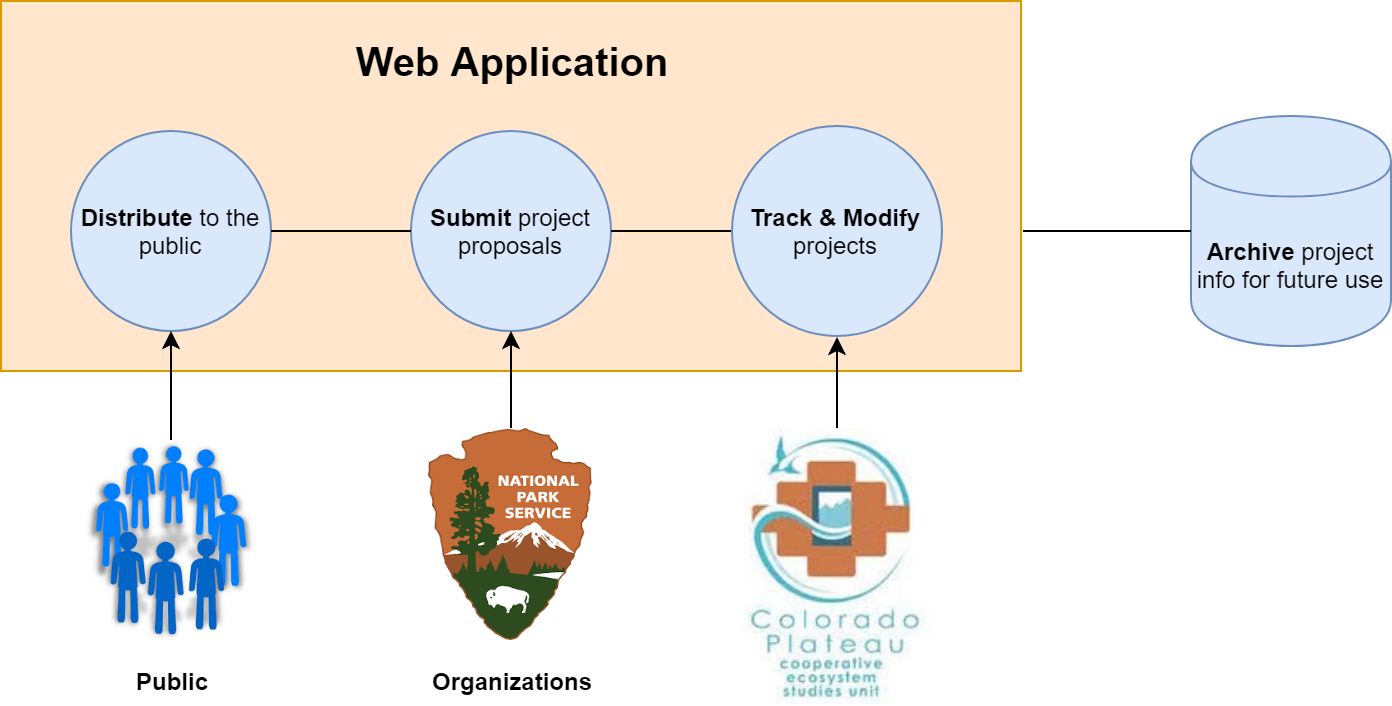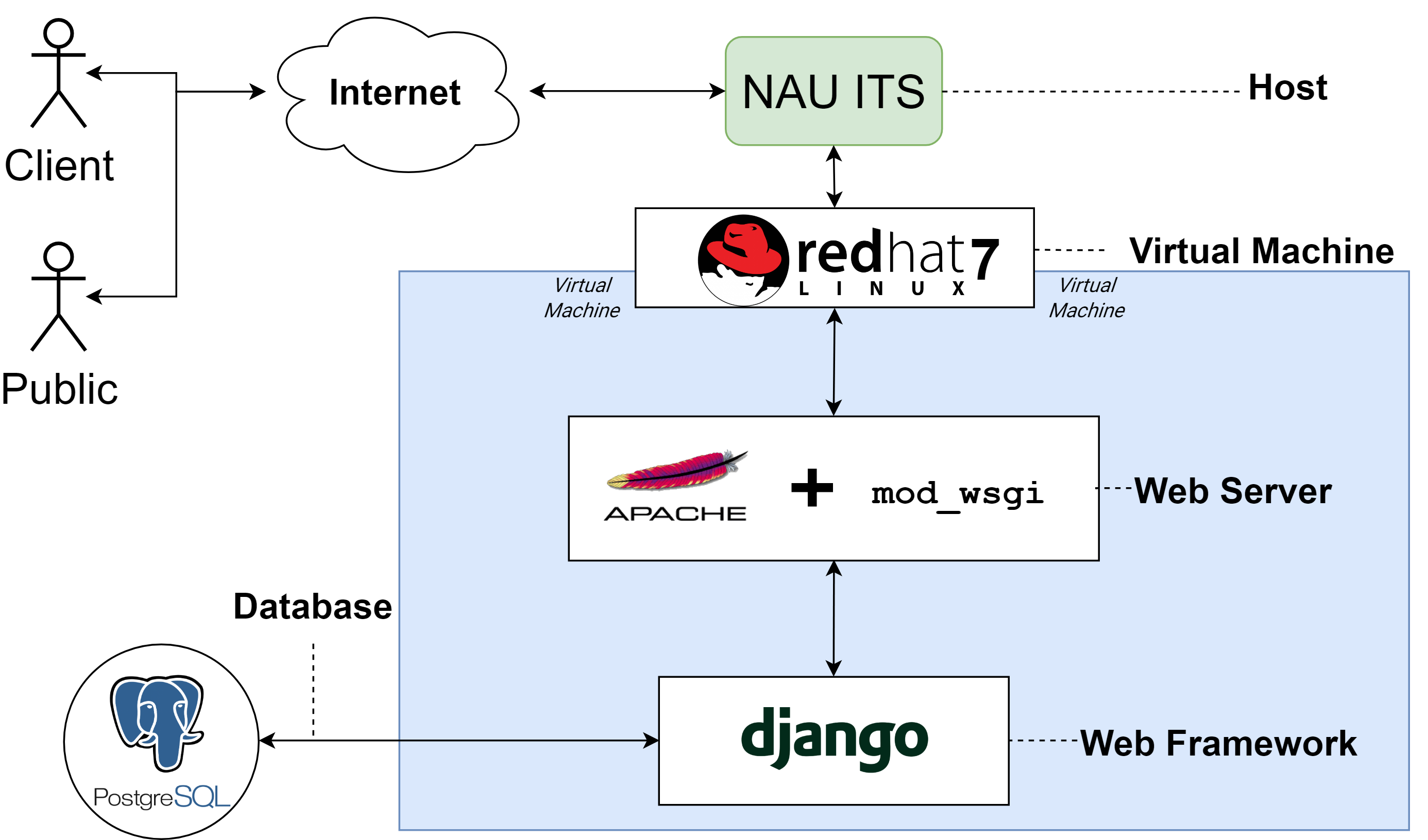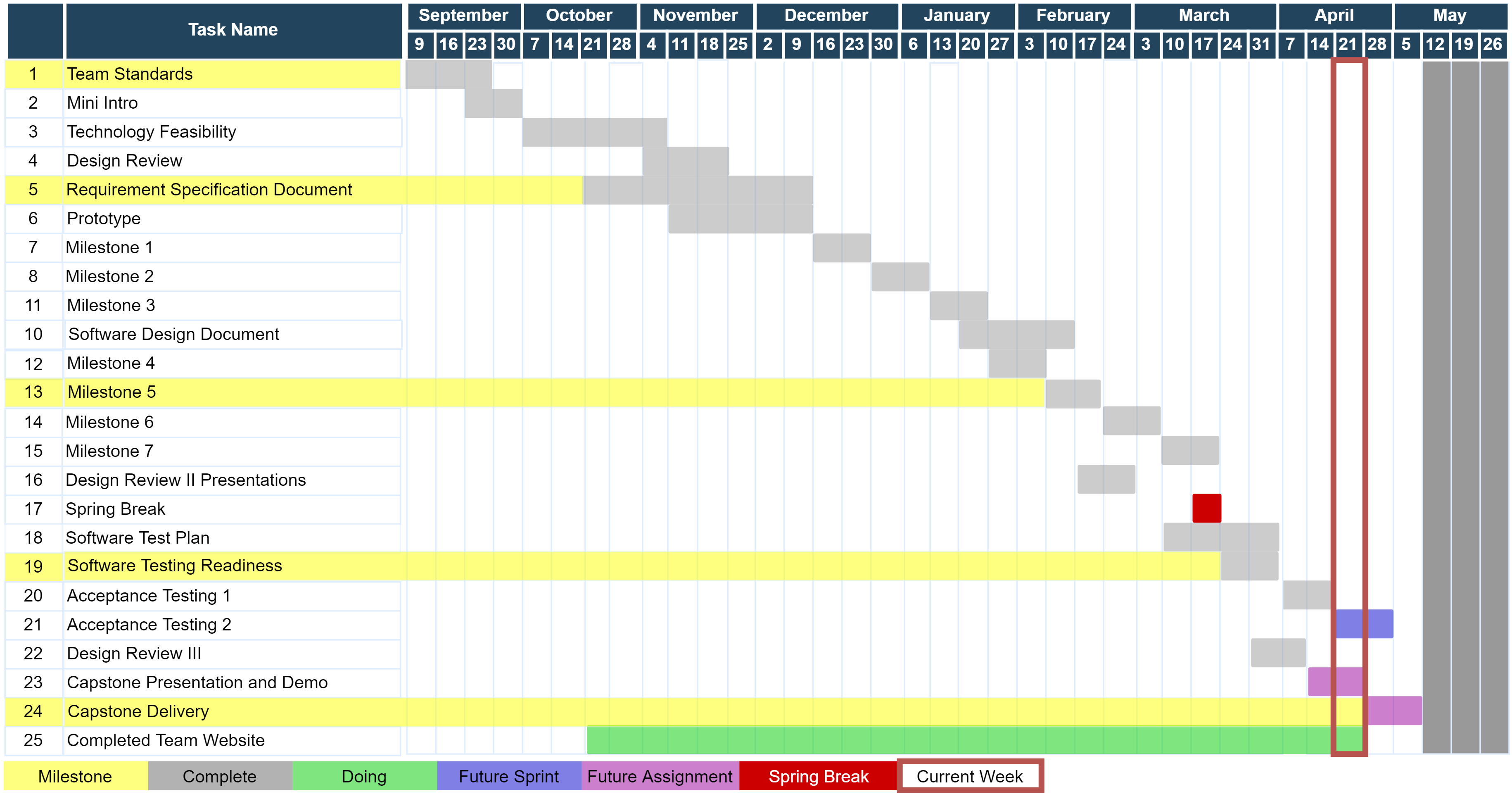Last updated February 1, 2019 based on Software Requirements Specification v1.3
The CPCESU works with federal and non-federal partners to conduct projects for land stewardship in the Southwestern United States. Agreements are made between partners to support research, technical assistance, education, and for creating long-standing resource management policies. CPCESU is a part of a larger national organization, the Cooperative Ecosystem Studies Units (CESU) Network. The Colorado Plateau Unit is hosted by Northern Arizona University's School of Forestry in Flagstaff, Arizona.
The CPCESU gets dozens of project proposals, hundreds of modifications, and millions of dollars each year to setup, organize, track, and archive these projects. Since their founding, they have used an off-the-cuff approach to project management using email, Microsoft Excel, a Microsoft Access database, and a shared file system drive.
Below is their workflow at a glance, with their accompanying techonlogies (Email; Microsoft Access, Excel, Word; ShareDrive; Wordpress).

From their workflow, we have derived the following problems at each step of the way, summarized into one or two words each.

Notably, their largest problem is tracking projects, especially modifications. Modifications are changes to time, money, or personnel.
Presently, tens of millions of dollars go unreported due to bad tracking. The money exists in the reports and files they receive, but cannot be properly entered into their current system. Instead of reporting to NAU (their host organization) an indirect rate of 50%, they can only confidently say 17.5%. This can impact whether or not NAU wants to host the organization in the future.
Below, at a glance, are the other problems plaguing the current project management system in place at the CPCESU.
These requirements are based on our Software Requirements Specification document. You can view the various requirements at in our archive, under "Software Requirements".
From these requirements, we have started work on a proposed solution to the CPCESU's problems.

The solution will have three primary sections:
Our solution will fix the client’s problem by providing each stakeholder to this website a unique way of accessing the website that addresses their needs. Most importantly, it will decrease the workload with regards to finding and analyzing project data.
At a minimum, we want our client to be able to:
For this project, we are working with NAU's Information Technology Services to deploy and host this solution. To determine our technologies, we worked with CPCESU, NAU ITS, and amougst ourselves to generate a Technological Feasability Analysis (See the document in our archive) and pick the following technologies.

We will be utilizing:
These choices were based off of two main factors:
Presently, as of the current requirements document, this is our projected timeline for Fall 2018 and Spring 2019.

Last updated based off of our Undergraduate Symposium presentation. Current as of April 27, 2019.
Below is a summary of our milestones. These are used to schedule work and determine progress.
The fall semeester of capstone is focused on meeting with our client, generating requirements, researching and picking technologies, and creating a tech. demo to test everything. All of these milestones are complete as of December 12, 2018.
Presently, we plan on taking a break (per ourselves and the request of our mentor), but will resume a week before school starts to get prepared for the spring semester. Work includes refining the prototype and modifying the requirements document with our client.
Other things include creating presentations to our peers about our progress, drafting reports, and writing any other formal assignment included in the capstone class for spring 2019.